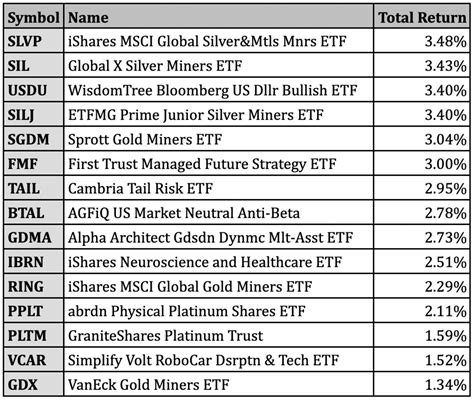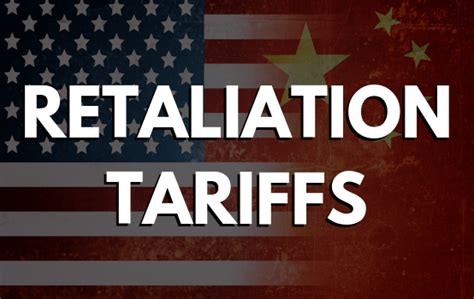
Warren Buffett’s long-standing endorsement of low-cost index funds, particularly Vanguard’s S&P 500 ETF (VOO), suggests that a $1,000 investment in this ETF could potentially yield significant returns over the long term, mirroring the historical performance of the S&P 500. Buffett’s consistent advocacy stems from the belief that broad market exposure, achieved through passively managed funds, offers most investors the best chance of building wealth.
Warren Buffett, the chairman and CEO of Berkshire Hathaway, has consistently recommended that most investors, particularly those without the time or expertise to actively manage their portfolios, should invest in low-cost S&P 500 index funds. His preferred vehicle for this strategy is the Vanguard S&P 500 ETF (VOO). Buffett’s rationale is rooted in the historical performance of the S&P 500, which has delivered substantial returns over the long term, and the efficiency and low expense ratios of index funds like VOO.
“My advice to the trustee couldn’t be more simple: Put 10% of the cash in short-term government bonds and 90% in a very low-cost S&P 500 index fund,” Buffett wrote in his 2013 letter to Berkshire Hathaway shareholders, outlining instructions for managing his estate for his wife’s benefit. “I believe the trust’s long-term results from this policy will be superior to those attained by most investors – whether pension funds, institutions or individuals – who employ high-fee managers.”
The Appeal of the Vanguard S&P 500 ETF (VOO)
The Vanguard S&P 500 ETF (VOO) is designed to track the performance of the S&P 500 index, which represents the 500 largest publicly traded companies in the United States. This broad diversification reduces the risk associated with investing in individual stocks. VOO is passively managed, meaning it seeks to replicate the index’s performance rather than attempting to outperform it through active stock picking. This passive management approach translates to significantly lower expense ratios compared to actively managed funds. As of [Insert Current Date – Using data from yahoo finance], VOO boasts an exceptionally low expense ratio of 0.03%, meaning investors pay only $0.03 per $100 invested annually. This low cost is a significant advantage, particularly over the long term, as it minimizes the drag on investment returns.
Historical Performance and Potential Returns
The S&P 500 has historically delivered an average annual return of around 10% before inflation. While past performance is not indicative of future results, this historical data provides a benchmark for potential returns. Investing $1,000 in VOO and allowing it to grow at a similar average annual rate could result in substantial gains over time. For example, assuming a 10% annual return, a $1,000 investment could double in approximately seven years. Over several decades, the compounding effect of these returns could transform a modest initial investment into a significant sum.
However, it’s crucial to acknowledge that investment returns are not guaranteed. The stock market is subject to volatility, and the S&P 500 can experience periods of significant gains and losses. Economic downturns, geopolitical events, and changes in investor sentiment can all impact market performance. Investors should be prepared for fluctuations in their portfolio value and maintain a long-term investment perspective.
Buffett’s Rationale for Index Fund Investing
Buffett’s preference for index funds is driven by several key factors:
-
Diversification: The S&P 500 represents a broad cross-section of the U.S. economy, providing instant diversification across various sectors and industries. This diversification reduces the risk associated with investing in individual companies.
-
Low Costs: Index funds like VOO have significantly lower expense ratios compared to actively managed funds. These lower costs directly translate to higher returns for investors over the long term.
-
Market Efficiency: Buffett believes that it is extremely difficult for most investors, including professional money managers, to consistently outperform the market over the long term. The market is highly efficient, reflecting all available information in stock prices. Attempting to “beat the market” through active stock picking often results in lower returns after accounting for fees and trading costs.
-
Simplicity: Investing in an S&P 500 index fund is simple and straightforward. Investors do not need to spend time researching individual companies or trying to time the market.
The Importance of Long-Term Investing
Buffett’s investment philosophy emphasizes the importance of long-term investing. He advocates for holding investments for extended periods, allowing the power of compounding to work its magic. Compounding refers to the process of earning returns on both the initial investment and the accumulated interest or gains. Over time, compounding can significantly amplify investment returns.
Criticisms and Considerations
While Buffett’s endorsement of index funds is widely respected, it’s essential to acknowledge some criticisms and considerations:
-
Market Volatility: The stock market is inherently volatile, and the S&P 500 can experience significant fluctuations. Investors should be prepared for periods of market decline and maintain a long-term investment perspective.
-
Opportunity Cost: By investing in an index fund, investors are foregoing the potential to outperform the market by actively selecting individual stocks. However, as Buffett argues, the vast majority of investors are unlikely to consistently outperform the market.
-
Index Concentration: The S&P 500 is a market-capitalization-weighted index, meaning that the largest companies in the index have a greater influence on its performance. This can lead to concentration risk, where a small number of companies account for a significant portion of the index’s returns.
-
Not Suitable for All Investors: Index fund investing may not be suitable for all investors. Individuals with a very short time horizon or a low tolerance for risk may prefer more conservative investment strategies.
Alternatives to VOO
While VOO is a popular and highly regarded S&P 500 ETF, other similar options are available, including:
-
SPDR S&P 500 ETF Trust (SPY): SPY is the oldest and most actively traded S&P 500 ETF. It has a slightly higher expense ratio than VOO (0.0945%).
-
iShares Core S&P 500 ETF (IVV): IVV is another low-cost S&P 500 ETF with a similar expense ratio to VOO (0.03%).
The choice between these ETFs often comes down to personal preference, trading volume, and any existing relationship with the fund providers. All three offer virtually identical exposure to the S&P 500.
Beyond the S&P 500
While Buffett primarily recommends S&P 500 index funds, investors may also consider other types of index funds that provide exposure to different market segments or asset classes. These include:
-
Total Stock Market Index Funds: These funds track the performance of the entire U.S. stock market, including small-cap, mid-cap, and large-cap companies. They offer even broader diversification than S&P 500 index funds.
-
International Stock Index Funds: These funds track the performance of stock markets outside the United States. They provide exposure to global economies and can help diversify a portfolio.
-
Bond Index Funds: These funds track the performance of a basket of bonds. They offer a more conservative investment option compared to stock index funds and can help reduce portfolio volatility.
The Importance of Asset Allocation
Investing in an S&P 500 index fund like VOO should be part of a well-diversified asset allocation strategy. Asset allocation refers to the process of dividing an investment portfolio among different asset classes, such as stocks, bonds, and real estate. The optimal asset allocation depends on an investor’s individual circumstances, including their risk tolerance, time horizon, and financial goals.
Considerations for New Investors
For individuals new to investing, starting with a low-cost S&P 500 index fund like VOO can be an excellent way to gain exposure to the stock market. It’s essential to:
-
Understand the Risks: Be aware of the risks associated with investing in the stock market, including the potential for losses.
-
Start Small: Begin with a small amount of money that you are comfortable losing.
-
Invest Regularly: Consider setting up a regular investment plan to take advantage of dollar-cost averaging, which involves investing a fixed amount of money at regular intervals, regardless of market conditions.
-
Stay Informed: Stay informed about market trends and economic developments, but avoid making impulsive investment decisions based on short-term market fluctuations.
Conclusion
Warren Buffett’s endorsement of Vanguard’s S&P 500 ETF (VOO) reflects his belief in the power of low-cost index fund investing for long-term wealth creation. While past performance is not indicative of future results, the historical performance of the S&P 500 suggests that a $1,000 investment in VOO could potentially yield significant returns over time. However, investors should be aware of the risks associated with investing in the stock market and maintain a long-term investment perspective. Investing in VOO should be part of a well-diversified asset allocation strategy tailored to individual circumstances and financial goals. Buffett’s consistent message remains clear: for most investors, simplicity and low costs are key to achieving long-term investment success. He emphasizes that consistently trying to beat the market is a fool’s errand for most people, and that focusing on long-term, diversified investments is the surest path to financial security.
The consistent reiteration of this advice from one of the world’s most successful investors should serve as a guiding principle for anyone looking to build wealth over time. By embracing the power of compounding and minimizing investment costs, individuals can significantly increase their chances of achieving their financial goals. Buffett’s legacy extends beyond his investment prowess; it includes his dedication to empowering everyday investors with the knowledge and tools they need to succeed.
Frequently Asked Questions (FAQ)
1. What is the Vanguard S&P 500 ETF (VOO)?
The Vanguard S&P 500 ETF (VOO) is an exchange-traded fund designed to track the performance of the Standard & Poor’s 500 (S&P 500) index. The S&P 500 index represents the 500 largest publicly traded companies in the United States, weighted by market capitalization. VOO is a passively managed fund, meaning its investment strategy is to replicate the index’s holdings and performance rather than actively selecting stocks to outperform the market. It offers investors a diversified and low-cost way to gain exposure to the broad U.S. stock market.
2. Why does Warren Buffett recommend investing in VOO or similar S&P 500 index funds?
Warren Buffett recommends investing in low-cost S&P 500 index funds like VOO for several reasons:
- Diversification: The S&P 500 provides instant diversification across 500 of the largest U.S. companies, reducing the risk associated with investing in individual stocks.
- Low Costs: VOO has a very low expense ratio (0.03% as of [Insert Current Date]), meaning investors pay minimal fees to own the fund. This is a significant advantage over actively managed funds, which typically have higher fees that can erode returns over time.
- Market Efficiency: Buffett believes that it is extremely difficult for most investors, including professional money managers, to consistently outperform the market over the long term. The market is highly efficient, and attempting to “beat the market” through active stock picking often results in lower returns after accounting for fees and trading costs.
- Simplicity: Investing in an S&P 500 index fund is simple and straightforward. Investors do not need to spend time researching individual companies or trying to time the market.
- Historical Performance: The S&P 500 has historically delivered strong returns over the long term. While past performance is not indicative of future results, it provides a benchmark for potential returns.
Buffett has stated that for most people, especially those without the time or expertise to actively manage their portfolios, investing in a low-cost S&P 500 index fund is the best way to build wealth over time.
3. How much could a $1,000 investment in VOO potentially grow over time?
The potential growth of a $1,000 investment in VOO depends on several factors, including the future performance of the S&P 500 and the length of the investment period. The S&P 500 has historically delivered an average annual return of around 10% before inflation. However, it’s important to note that past performance is not indicative of future results, and the stock market is subject to volatility.
Assuming a hypothetical average annual return of 10%, a $1,000 investment in VOO could grow as follows:
- After 5 years: Approximately $1,610.51
- After 10 years: Approximately $2,593.74
- After 20 years: Approximately $6,727.50
- After 30 years: Approximately $17,449.40
These figures are estimates and do not account for inflation or taxes. Actual returns may be higher or lower depending on market conditions.
4. What are the risks associated with investing in VOO?
While VOO offers diversification and low costs, it’s important to be aware of the risks associated with investing in the fund:
- Market Risk: The value of VOO can fluctuate with the overall stock market. Economic downturns, geopolitical events, and changes in investor sentiment can all impact market performance.
- Index Concentration: The S&P 500 is a market-capitalization-weighted index, meaning that the largest companies in the index have a greater influence on its performance. This can lead to concentration risk, where a small number of companies account for a significant portion of the index’s returns.
- Sector Risk: The S&P 500 is concentrated in certain sectors of the economy, such as technology, financials, and healthcare. Changes in these sectors can have a significant impact on the performance of the index.
- Inflation Risk: Inflation can erode the purchasing power of investment returns. While the S&P 500 has historically provided returns that exceed inflation, there is no guarantee that this will continue to be the case in the future.
Investors should be prepared for fluctuations in their portfolio value and maintain a long-term investment perspective. It’s also important to diversify your investments across different asset classes to reduce risk.
5. Is VOO the right investment for everyone?
VOO can be a suitable investment for many investors, particularly those with a long-term time horizon and a moderate to high tolerance for risk. It is often recommended for:
- Beginner Investors: Its simplicity and broad diversification make it a good starting point for those new to investing.
- Long-Term Investors: It’s an excellent tool for retirement savings or other long-term financial goals.
- Passive Investors: It suits those who prefer a hands-off approach to investing and don’t want to spend time actively managing their portfolios.
However, it may not be the best choice for everyone. VOO might not be suitable for:
- Short-Term Investors: If you need access to your money in the near future (e.g., less than 5 years), the stock market’s volatility could be a concern.
- Risk-Averse Investors: If you are uncomfortable with the potential for losses, you may prefer more conservative investments, such as bonds or cash.
- Active Traders: Those who enjoy actively trading stocks and trying to beat the market may find VOO too passive.
Before investing in VOO or any other investment, it’s important to consider your individual circumstances, including your risk tolerance, time horizon, and financial goals. Consulting with a financial advisor can help you determine the best investment strategy for your needs.









